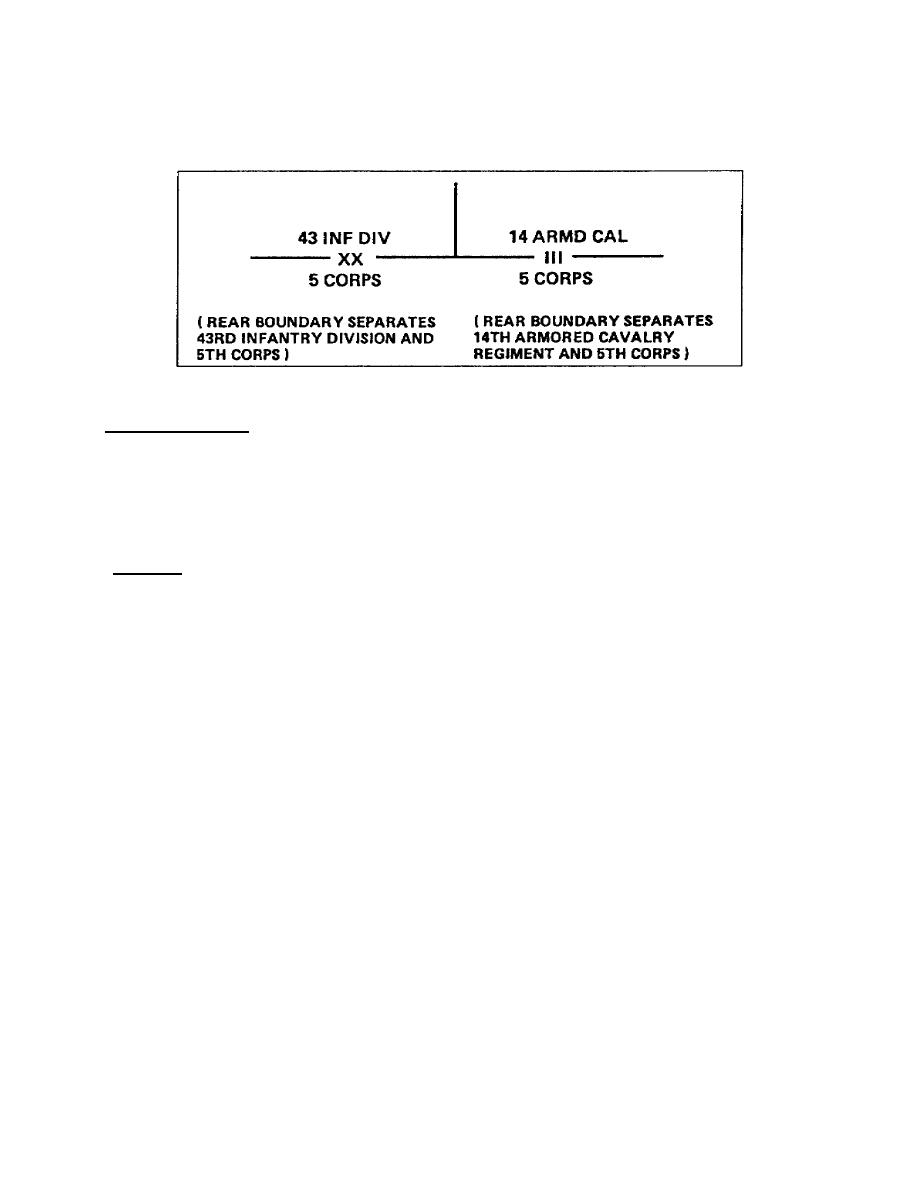
b. Rear Boundaries. When indicating rear boundaries, the size indicator along the boundary
corresponds to the smaller unit or the commanded unit, and not the commanding unit. Figure 1-21
shows examples of rear boundaries.
Figure 1-21. Rear boundaries
9. Battlefield Activities.
The preceding paragraphs introduced you to a variety of symbols. These symbols, when used alone,
provide a specific piece of information. When you use these symbols in combinations on an operations
overlay, we get a picture of the battlefield. These may depict offensive, defensive, or retrograde
situations. Appendix B, p B-90, illustrates an example of a defensive control measure.
10. Summary.
In this lesson, you learned the symbols and techniques you use to prepare map overlays. Since this
subcourse is a basic introduction to preparing map overlays, you may need additional information.
Appendix B details the use of symbols. Review this extract to enhance your knowledge and recognition
of map overlay symbols. Appendix B, p B-89, identifies branch symbols that are unique to certain
NATO allies.
In lesson 2 of this subcourse, you will learn the techniques you use to prepare overlays for viewgraphs.
Before proceeding to lesson 2, complete the practice exercise. Check your answers with the practice
exercise answer key and feedback sheet. If any of your answers are incorrect, review the area indicated
until you understand the material. After successfully completing the practice exercise, proceed to lesson
2.
1-18
SS0529



 Previous Page
Previous Page
